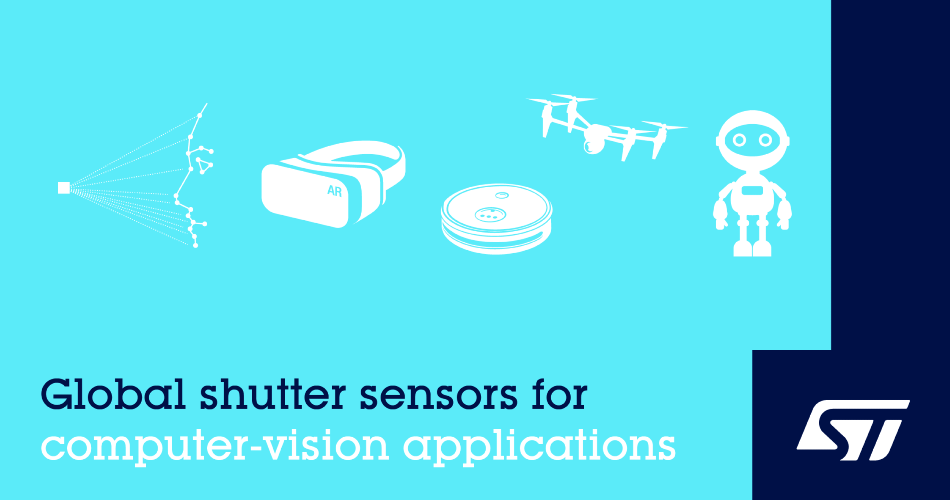STMicroelectronics, a global semiconductor leader serving customers across the spectrum of electronics applications, is enabling the next generation of smart computer-vision applications with new high-speed image sensors that use “global shutter” – the preferred mode for capturing distortion-free images when the scene is moving or when near-infrared illumination is needed.

ST’s advanced image-sensor process technologies enable class-leading pixel size while offering both high sensitivity and low crosstalk. The combination of silicon process innovation and advanced pixel architecture allows a smaller sensor pixel array on the top die, while keeping more silicon area on the bottom die to increase digital-processing capabilities and features.
The new sensors are the VD55G0 with 640 x 600 pixels and the VD56G3 with 1.5 Mpixels (1124 x 1364). Measuring 2.6mm x 2.5mm and 3.6mm x 4.3mm, respectively, VD55G0 and VD56G3 are the smallest on the market in relation to resolution. Low pixel-to-pixel crosstalk at all wavelengths, specifically near-infrared, ensures high contrast for superior image clarity. Embedded optical-flow processing in the VD56G3 calculates movement vectors, without the need for host computer processing. These new sensors are ideally suited to a wide range of applications including Augmented and Virtual Reality (AR/VR), Simultaneous Localization and Mapping (SLAM), and 3D scanning.
“These new global shutter image sensors are based on our third generation of advanced pixel technology and deliver significant improvements in performance, size, and system integration,” said Eric Aussedat, Imaging Sub-Group General Manager and Executive Vice President of the Analog, MEMS and Sensors Group, STMicroelectronics. “They are enabling another step forward in computer-vision applications, empowering designers to create tomorrow’s smart, autonomous industrial and consumer devices.”
Samples are shipping now to lead customers. Please contact your ST sales office for pricing options and sample requests.
Further technical information
Global-shutter sensors save all pixel data in each frame simultaneously, contrasting with “rolling-shutter” operation that captures pixel data sequentially one line at a time, which makes moving images vulnerable to distortion or in need of additional corrective processing.
ST’s advanced pixel technology, including full Deep Trench Isolation (DTI), enables extremely small 2.61μm x 2.61μm pixels that combine low Parasitic Light Sensitivity (PLS), high Quantum Efficiency (QE), and low crosstalk in a single die layer, attributes that other pixel technologies cannot achieve simultaneously.
The ST approach enables a small pixel on a backside illumination (BSI) die, which allows space-saving vertical stacking of the optical sensor and associated signal-processing circuitry on the bottom die to achieve an extremely small sensor size and to embed a greater number of key features, including a fully-autonomous optical flow block.
The bottom die is fabricated in ST’s 40nm technology and integrates digital and analog circuitry. The high-density, low-power digital circuitry incorporates hardware features including an exposure algorithm with statistics gathered from up to 336 zones, automatic defect correction, and automatic dark calibration. The fully autonomous low-power optical-flow block is able to calculate 2000 movement vectors at 60fps. The embedded vector generation is extremely helpful for AR/VR or robotics, to support SLAM or six degrees of freedom (6DoF) use cases, especially in host systems with limited processing capabilities.
The sensors also support multiple frame contexts with programmable sequencing, including full illumination controls. They also feature an integrated temperature sensor, I2C Fast mode+ control, defect correction, windowing, binning, and MIPI CSI-2 data interface.